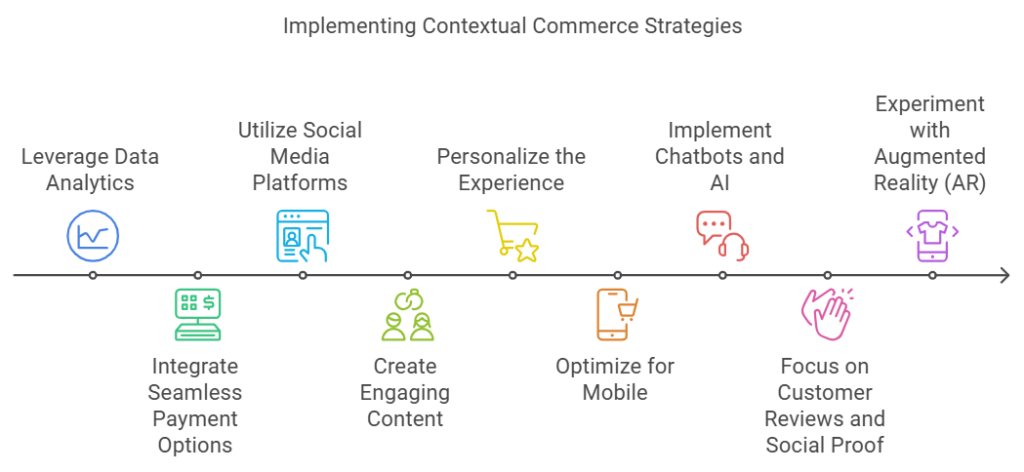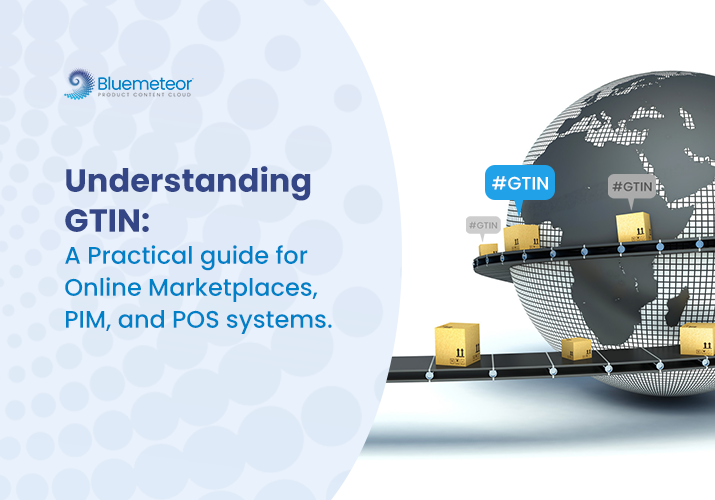Decoding the Impact: How Contextual Commerce Shapes Product Content Requirements

In today’s fast-evolving digital world, integrated shopping experiences are transforming how businesses connect with consumers. Delivering seamless, personalized interactions across social platforms, messaging apps, and voice assistants has become essential. To thrive in this environment, brands must adapt their approach to product content. This shift isn’t just relevant for retail or consumer goods—industrial products, too, are seeing a profound impact from contextual commerce strategies.
Let’s explore how this shift shapes product content requirements, with examples, insights, and actionable strategies.
Understanding the Concept
Contextual commerce focuses on enabling purchases within the context of a user’s activity. This approach eliminates the need to redirect users to standalone e-commerce platforms.
For instance, LinkedIn’s sponsored posts allow businesses to sell industrial machinery by embedding product catalogs into B2B professionals’ feeds.
Why It’s Important
- Consumer Convenience: 62% of shoppers prioritize convenience in their buying decisions (Think with Google).
- Higher Engagement: Platforms offering embedded shopping see 20% more conversions.
- Projected Growth: Integrated commerce is expected to grow by 28% annually through 2030 (Statista).
- B2B Relevance: Over 70% of industrial buyers now prefer researching and purchasing products online instead of through traditional channels (Forrester).
Challenges in Creating Product Content for Contextual Commerce
1. Adaptability Across Platforms
Each platform demands unique content formats tailored for specific industries and audiences.
Points to Consider:
- Visual Content: Instagram prioritizes vibrant product images; LinkedIn favors technical diagrams for industrial products.
- Interactive Elements: AR product configurators for industrial tools can significantly enhance engagement.
- Short-Form and Long-Form Balance: TikTok videos for quick demonstrations; detailed spec sheets for engineering tools.
2. Real-Time Updates
Dynamic environments require brands to keep product information updated.
Critical Updates:
- Pricing Adjustments: Reflect fluctuating raw material costs.
- Availability Alerts: Highlight low-stock or lead times for industrial machinery.
- Trend Alignment: Adapt product promotions to seasonal or industry-specific demand, like annual maintenance cycles.
Example: A supplier of hydraulic pumps synchronizes inventory updates across its e-commerce site, LinkedIn ads, and distributor networks.
3. Relevance and Personalization
Consumers and industrial buyers alike expect personalized, data-driven interactions.
Strategies for Personalization:
- Content Segmentation: Tailor product descriptions to different buyer personas (e.g., engineers vs. procurement managers).
- Dynamic Pricing Models: Offer industry-specific pricing for bulk purchases.
- Localized Messaging: Provide language-specific instructions for international clients.
Example: A steel manufacturer customizes its marketing to showcase localized compliance certifications for different countries.

Key Product Content Elements for Contextual Commerce
| Element | Purpose | Example |
|---|---|---|
| Clear Descriptions | Builds trust across platforms and industries. | Uniform specs for drills on LinkedIn, Instagram, and distributor websites. |
| Versatile Visuals | Enhances engagement across B2C and B2B markets. | HD images for retail; exploded-view diagrams for industrial buyers. |
| Search Optimization | Improves discoverability in competitive markets. | Meta tags like “precision cutting tools” tailored for LinkedIn and Google. |
| Localization | Appeals to diverse global audiences. | Safety manuals translated for EU and APAC markets. |
| Interactive Features | Encourages deeper product exploration. | AR tools to visualize industrial machines in production lines. |
| Consistent Branding | Builds trust and professional appeal. | Maintaining consistent logos, fonts, and tone across all platforms. |
| Customer Testimonials | Builds credibility with industry leaders. | Showcase quotes from manufacturing plant managers. |
| Case Studies | Highlights practical applications. | Share how specific clients improved production with your equipment. |
Technologies Driving Contextual Commerce
1. AI-Powered Personalization
AI analyzes buyer behavior to recommend relevant products dynamically.
Key Insights:
- Suggest complementary products, such as maintenance kits for purchased machinery.
- Forecast buyer needs based on past purchasing cycles.
Example: A welding equipment provider uses AI to recommend gas cylinders and safety gear to buyers of welding torches.
2. AR in Product Visualization
Augmented reality enables buyers to visualize industrial tools or equipment before purchasing.
Key Insights:
- Virtual placement of machinery within factory layouts.
- AR configurators to explore customizable parts.
Example: An industrial shelving company provides AR visualization to help factories optimize warehouse layouts.
Leveraging Analytics to Refine Product Content
1. Behavioral Insights
Analytics tools help industrial brands understand buyer intent, from casual researchers to procurement managers.
Example: An industrial valve supplier uses analytics to track engagement on product pages and tailor follow-ups with demo videos.
2. Testing Strategies
A/B testing optimizes both creative and technical content for better engagement.
Example: A manufacturer of CNC machines tests different product demo formats to see which drives higher interaction on LinkedIn.
Emerging Trends in Contextual Commerce
1. Immersive Digital Environments
The rise of virtual factories and metaverse integration is reshaping industrial product demonstrations.
Example: A robotics company creates a virtual showroom where buyers can explore automated solutions with guided tours.
2. Wearable Devices and IoT
Connected wearables enable real-time equipment monitoring and ordering for industrial buyers.
Example: A smart watch alerts technicians to low stock of replacement parts and offers a seamless reordering process.
Success Checklist for Contextual Commerce
Here’s a detailed checklist to fine-tune your product content:
- Create platform-specific formats tailored to B2B and B2C audiences.
- Regularly update pricing and availability, especially for high-demand industrial items.
- Optimize for search, voice, and platform algorithms.
- Include technical documentation and downloadable resources.
- Use interactive features like AR and virtual tours for better engagement.
- Localize content for international markets.
- Incorporate social proof, such as industry-specific testimonials and certifications.
- Align with emerging trends like IoT, wearables, and the metaverse.
Future Outlook
The digital commerce landscape will continue to evolve rapidly. By 2026, nearly half of online purchases—both consumer and industrial—will occur within integrated, non-traditional environments.
Investing in robust, adaptable product content strategies ensures businesses are future-ready. By embracing personalization, interactivity, and real-time updates, you can cater to an increasingly sophisticated buyer base.
Conclusion:
Contextual commerce isn’t just a trend—it’s a transformative approach to how both consumer and industrial buyers shop. Success lies in creating platform-specific, buyer-centered content that meets modern demands.
To simplify and optimize your product content strategy, consider leveraging solutions like Bluemeteor Product Content Cloud. Designed to manage, enrich, and distribute product content seamlessly, it ensures your business is ready to thrive in the era of integrated commerce.
Request a Demo Today and discover how Bluemeteor can revolutionize your product content management!
Related Articles
Recent Post
Categories




